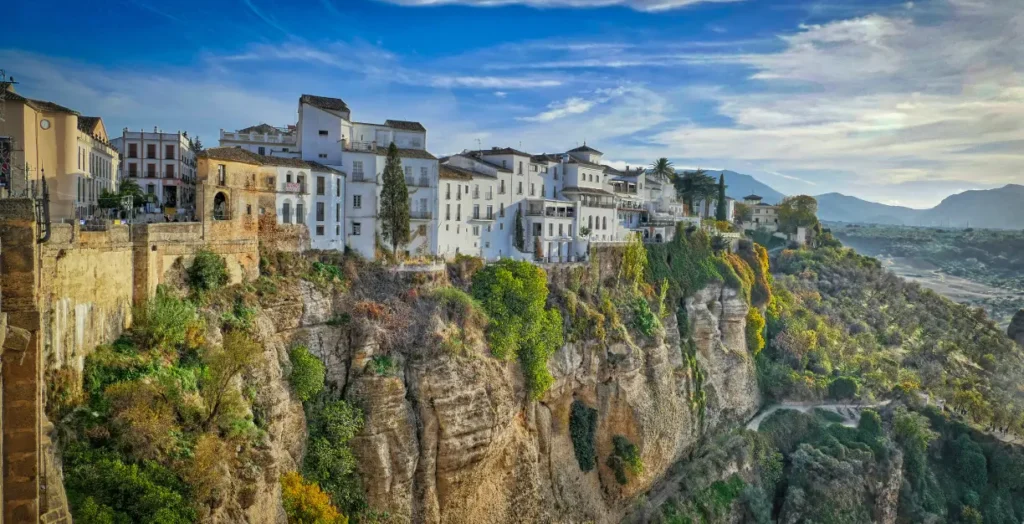SpainWander
About
Welcome to SpainWander, your trusted guide to discovering the best cities to visit in Spain and curating unforgettable Spanish adventures! We are passionate about showcasing the vibrant soul of Spain, from its iconic cities to its hidden corners, helping travelers experience the country’s rich culture, diverse landscapes, and timeless charm.
Whether you’re drawn to the artistic energy of Barcelona, the historic streets of Seville, or the tranquil beaches of Mallorca, our travel guides are thoughtfully designed to help you explore Spain with ease, authenticity, and inspiration.
From flight tips and hotel recommendations to in-depth cultural insights and detailed itineraries, SpainWander gives you everything you need to plan the perfect trip to Spain, whether it’s a weekend escape, a cultural deep-dive, or a road trip across the Iberian Peninsula.

FAQs SpainWander
Got questions about traveling to Spain? Here are answers to some of the most common things travelers ask about planning, packing, and exploring Spain.
Do I need a visa to travel to Spain?
Spain is part of the Schengen Area. Travelers from the EU, USA, Canada, Australia, and many other countries can enter visa-free for up to 90 days within a 180-day period. If you’re planning to stay longer or travel for work or study, you’ll need to apply for the appropriate visa. Always check with the Spanish consulate or embassy in your country for the most up-to-date requirements.
What’s the best time of year to visit Spain?
The best time to visit Spain is in spring (April to June) and autumn (September to October). These seasons offer mild weather, fewer crowds, and access to vibrant festivals like Feria de Abril in Seville or La Mercè in Barcelona. Summer is great for beach lovers, while winter appeals to those heading to the Sierra Nevada or the Canary Islands for warmer weather.
What are the most popular cities to explore in Spain?
Top Spanish cities to explore include:
Barcelona for art, architecture, and beaches
Madrid for museums and nightlife
Seville for flamenco and historical charm
Granada for the Alhambra
Valencia for food, festivals, and beaches
Each offers a unique taste of Spanish culture, making them perfect for first-time or repeat visitors.
How can I get around Spain — train, car, or plane?
Spain has one of Europe’s best transportation systems. You can travel easily by:
High-speed trains (Renfe AVE): Ideal for city-to-city travel
Buses: Affordable and extensive for regional travel
Domestic flights: Convenient for long-distance routes
Car rentals: Perfect for rural areas and scenic drives.
Public transport is reliable and budget-friendly, especially in major cities.
Is Spain safe for solo travelers?
Spain is considered a safe destination for solo travelers, including women. Violent crime is rare. Petty theft can happen in tourist-heavy areas, so keep valuables secure. Stick to well-lit areas at night, and use official transport. Locals are generally friendly and helpful, making Spain ideal for solo exploration.
Do I need travel insurance for Spain?
While not mandatory, travel insurance is highly recommended. It can cover unexpected costs such as medical emergencies, lost baggage, or trip cancellations. EU citizens should carry their European Health Insurance Card (EHIC), but it doesn’t replace full travel insurance for additional coverage.
Can I bring my pet when traveling to Spain?
Yes, you can bring pets to Spain if you follow EU travel regulations:
Microchip identification
Valid rabies vaccination
Pet passport or health certificate
Airlines may have specific pet policies, so always confirm in advance. Pets are allowed on some public transport and in many pet-friendly accommodations.
What should I pack for a trip to Spain?
Your packing list depends on the season, but generally include:
Light clothing for summer
A jacket or layers for spring/fall evenings
Comfortable walking shoes
Sun protection (hat, sunglasses, sunscreen)
Travel adapter (Spain uses type C & F plugs, 230V)
Don’t forget travel insurance documents and any prescription medications.
What are typical costs for accommodation and food?
Spain is affordable compared to many Western European countries. On average:
Accommodation: €30–€80/night for mid-range hotels
Meals: €10–€20 at restaurants, less at tapas bars
Transport: Local buses ~€1.50, high-speed trains vary by route
Budget-conscious travelers can explore Spain comfortably on €50–€80/day.
Where can I find local festivals or cultural events?
Spain is famous for its year-round cultural festivals. Highlights include:
La Tomatina (Buñol – tomato-throwing)
San Fermín (Pamplona – running of the bulls)
Semana Santa (Easter processions across Spain)
Feria de Abril (Seville – flamenco and fairgrounds)
Check city tourism websites and local event calendars for updated festival schedules during your trip.
Still have questions?
I’m here to help! If you couldn’t find the answer you were looking for, feel free to reach out — I’ll do my best to guide you on your Spain travel journey.
